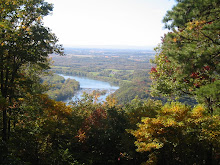The first thing that strikes me about Janisse Ray’s memoir/nature book is the title. I feel titles are often overlooked or under discussed in writing and I want to acknowledge the strength behind this title. It is original and edgy and I think would grab anyone’s attention. Janisse Ray is a very seamless writer. From the beginning of the book I feel her sentences, whether long or short, are tight and clear without lacking originality or rhythm. The first sentence that led me into the writing of Ray came on the first page of the introduction: “At night the stars are thick and bright as a pint jar of fireflies, the moon at full a pearly orb, sailing through them like an egret.” From then on, I was hooked.
Ray takes her readers through a childhood in an unusual landscape. It is not often you read about living in the middle of a junkyard, heaps of metal surrounding the narrator’s bedroom window. I find it refreshing and adventurous, stepping into this foreign world. Ray makes it accessible. She sets a tone that welcomes me as the reader into the characters from which she came. The first few stories seem to focus primarily on Ray’s extended family. She tells stories as though she heard them yesterday, and at times I question her credibility because of how removed she seems to be from the event at hand. That being said, she is a phenomenal storyteller who balances scene and description with confidence and cadence. I especially enjoy the stories of her and her brothers. I think I was hanging on to her voice in them because I didn’t feel her as much in the beginning. She chooses the right memories to include, and as I look back on them I see their significance even more.
I particularly like her organizational structure. She alternates between memoir that reveals the lives and characters of her parents, grandparents and siblings and nature essays that articulate scientifically as well as personally the destruction of the longleaf pine forests. It is not until the end of the book that I started to see a clear message of connectivity between the forests and her family, nature and the junkyard. I admire what she does in her chapter entitled “Built by Fire.” She tells the story of how the pine leaf and lightning battled back and forth until they both learned to adapt and live with one another. Instead of just telling us what happened, she turns the pine and the lightning into characters, characters who have feelings and words. I find that to be an extremely inventive and interesting way to relay information. It inspires me to see the non-human world as characters in my own pieces.
Another question I have relates to her scientific classification. On pg. 211 more than halfway through the book, Ray states that “[she] left home now knowing the name of one wild bird except maybe a crow, and that [she] couldn’t identify wildflowers and trees.” Yet throughout the entire book, even when she seems to be in her “child” voice, she articulates very clearly and abundantly specific names of birds, trees, flowers and reptiles. I know she must have learned all of these names later, then gone back and put in their classifications, but there were times when I felt it was obviously not her voice and took away from the memoirist's point of view. Regardless, she does a seamless job of incorporating such scientific details throughout the entire book and if she hadn’t admitted to her ignorance, I would have never thought otherwise.
Ray flawlessly opens an essay/chapter. Every first sentence I read astonishes me in its structure and meaning. One of my favorites is: “There is a way to have your cake and eat it too; a way to log yet preserve a forest” (251). Or “A couple of million years ago a pine fell in love with a place that belonged to lightning” (35). Each opener holds a snippet of her voice that adds up over the entire book in a culmination at the end. Some of my favorite passages come from the very end and I think it is because I get more of Ray. She is there, in every event, every reflection, and every sentence. There is no Mama, or Dell or biologist friend to take the role of main character.
In this book, Ray is able to get at the heart of the longleaf pine destruction with compassion, detail and sincerity without an agenda or negative tone. She tells it like it is, amidst the stories of her childhood and family so that what we feel for her and the people around her, we can shift to the pines with care.
Subscribe to:
Post Comments (Atom)

Good post, Libba. I do think this book could be a good model for your thesis, so I hope you'll think about that.
ReplyDeleteI agree with you with respect to her admission about not knowing the names of any plants, trees or birds. I hope you will bring this up in class discussion. It's like a little knot that you can't forget as you're reading.